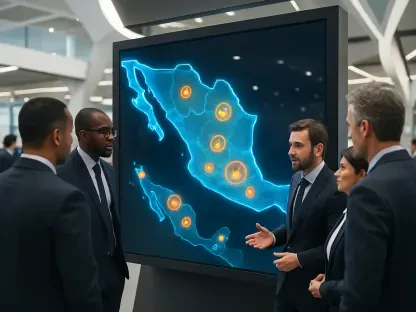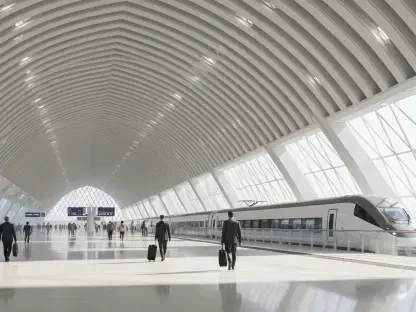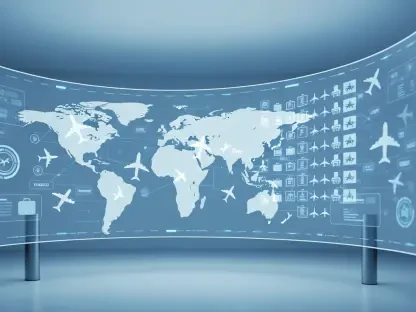As environmental awareness grows globally, the events industry faces a pivotal moment. An average conference with 800 attendees for a single day is equated to the carbon emissions of driving 31 cars for a year. This stark reality showcases the urgent need for sustainable practices. Event planners are now under immense pressure to implement eco-friendly solutions that can significantly diminish the carbon impact of their events. Yet, the path to sustainability is riddled with challenges such as budget limitations, high attendee expectations, last-minute changes, and insufficient staffing. Despite these obstacles, technology emerges as a beacon of hope. The application of innovative solutions promises to make events more efficient and sustainable while transforming how events are planned and executed. These modern tools open new doors for reducing environmental impact without compromising the quality or scale of the event.
The Role of Technology in Reducing Environmental Impact
Technology offers a variety of strategies to tackle the carbon footprint and waste traditionally associated with event planning. Among the most promising advancements is digital twin technology, a tool that allows event organizers to create virtual replicas of venue spaces. This enables planners to test layouts and logistical plans in a simulated environment, significantly reducing resource use and waste even before any physical structures are built. Transport emissions can also be slashed by facilitating remote collaborations and virtual tours. However, current adoption rates of such technologies remain low, with only 37% of planners employing them regularly, suggesting that the industry has yet to fully unlock their potential. Tools such as virtual venue tours and real-time analytics also play an essential role in planning. They ensure resources are managed wisely and decisions are made based on accurate, real-time data, further reducing unnecessary expenditure and environmental impact.
In combination, these technological solutions redefine the traditional event planning approach by emphasizing efficiency and sustainability as integral components. As events evolve, there is a notable shift towards intelligent, data-driven designs. This transition aligns with a broader industry trend of adopting innovative solutions over outdated, resource-heavy methods. As these technologies become more integrated into the event planning process, they promise to enhance both the quality and sustainability of events. Driving these changes are key industry players who advocate for technological innovation as a core element in future event strategy. Through concerted efforts to integrate these technologies, the events sector could experience transformative environmental and economic benefits.
Overcoming Barriers to Adoption
Although the potential of technology in promoting sustainable events is apparent, barriers hinder widespread adoption. Financial constraints pose one of the largest challenges; event planners often have strict budgets that limit their ability to invest in cutting-edge solutions. Additionally, there is a prevalent perception that sustainable practices might compromise the overall attendee experience, leading to hesitancy in implementing new technologies. Staffing shortages further exacerbate this issue, as organizations may lack the expertise needed to effectively integrate technological innovations. To address these barriers, industry leaders underscore the importance of raising awareness about the practical benefits of sustainable technologies.
Strategic collaboration with technology providers can ease the transition by offering affordable solutions and providing necessary technical support. By sharing case studies and success stories that highlight significant cost savings and enhanced event outcomes, planners can gain a clearer picture of how technology improves sustainability without diminishing quality. Furthermore, continued education and training for event professionals can build confidence in adopting new methods, equipping them with the skills to effectively leverage these advancements. As the industry continues to evolve, collaboration between technology developers and event organizers is paramount in overcoming adoption hurdles. Building trust and understanding between these parties is essential in shifting industry practices towards a more sustainable, tech-driven future, ultimately ensuring that events can thrive environmentally and economically.
Paving the Way for Future Innovations
Technology now offers innovative strategies to reduce the carbon footprint and waste traditionally linked with event planning. One significant advancement is the use of digital twin technology, which allows event coordinators to build virtual models of venue spaces. This enables them to experiment with layouts and logistics in a simulated environment, cutting down on resource consumption and waste long before any physical setup occurs. Remote collaborations and virtual tours can greatly minimize transport emissions. Despite these benefits, only about 37% of event planners consistently use such technologies, indicating the industry hasn’t fully embraced their potential yet. Tools like virtual venue tours and real-time analytics are crucial in planning, ensuring wise resource management and data-driven decisions, which decrease unnecessary expenses and environmental harm. Collectively, these technologies are reshaping the traditional approach to event planning by making efficiency and sustainability pivotal. This shift reflects a broader trend toward innovative methods, moving away from outdated, resource-intensive practices, thus improving the quality and sustainability of events while encouraging positive environmental and economic impacts.









